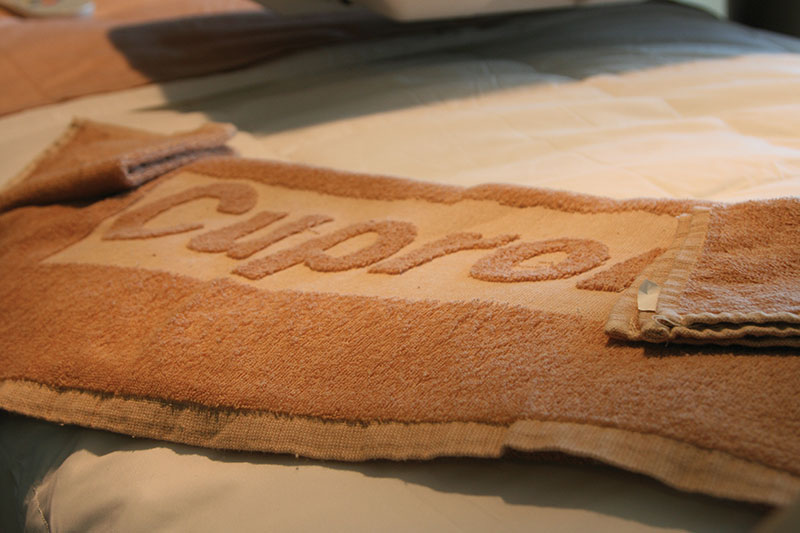Hospitals bank on antimicrobial properties of copper-infused products to drop patient infection incidents. In 2010, when 33 chilean miners were trapped underground for more than three months, special anti-microbial socks were sent down a supply shaft for the miners to wear. The same technology that doctors say helped keep the miners feet from foot infections is now being used at Sentara’s Norfolk General and Leigh hospitals in an attempt to cut the spread of infections.
Two clinical trials are underway at the Norfolk, Va., hospitals to test how Cupron Inc.’s technology of using copper in products, such as sheets, towels and countertops, can stop the spread of bacteria. At Norfolk General, linens infused with particles of copper oxide are being tested on a select number of beds. At Leigh Hospital, as part of the construction of a new acute-care tower that opened in November, more than 7,800 square feet of copper-infused countertops have been installed in clinical and patient areas. All the linens being used in the tower are also Cupron’.
“One of the worst things we deal with in any hospital setting is infection,” says Dr. Scott Miller, the vice president of medical affairs at Sentara Leigh. “Anything we can do to try and prevent the transmission of disease within our walls, we have to look at.”
Nearly 1.8 million patients a year develop infections while at health facilities getting treated for other illnesses, according to the Centers for Disease Control and Prevention. These hospital-acquired infections cause about 100,000 deaths a year in the United States and create about $45 billion in additional health care costs.
Hospitals work hard to try and prevent those infections, through room cleaning, constant reminders of hand washing and in some facilities, the use of ultraviolet light. The use of Cupron’s anti-microbial linens and solid surfaces is intended to supplement already rigorous infection policies, Miller says.
“The idea is to drive us to zero [hospital-acquired infections],” says Miller, whose medical background is in infectious diseases. “We’ll never get to zero, but we’ll hopefully get progressively better.”
How Does Copper Infused Products ?
Copper, an essential mineral, has natural anti-microbial properties, and causes a series of damaging effects on bacteria. Laboratory tests show that the Cupron-enhanced surfaces continuously reduce bacterial contamination, achieving 99.99 percent reduction within two hours of exposure, according to the company. The research is backed by the Environmental Protection Administration.
Cupron, founded in Israel in 2000 by a biochemist, opened what’s become its primary office in Richmond, Va, in 2009. The company works with Norfolk-based EOS Surfaces to develop countertops for hospital settings. Copper oxide-infused polymers are embedded into the material during manufacturing, turning it into anti-microbial product.
Likewise with the linens, copper is put right into the polymers with which the sheets, blankets and towels are made. The cotton/polyester blend linens are dye-free, but the copper naturally gives them a soft salmon hue. Low levels of copper ions are continuously released as a patient lies in his bed. Except for those patients who are unable to metabolize copper efficiently, the linens are safe.
“What we’re trying to do is knock down the amount of bacteria around a patient,” says Alastair Monk, a microbiologist and the director of clinical and scientific affairs at Cupron. “Our belief is that it’s going to help patients.” Cupron is also promoting its copper-infused socks as a way to help diabetic patients, who are more susceptible to fungal infections than people without diabetes. The company also makes a cosmetic pillowcase that has been shown to reduce wrinkles.
Inside Leigh Hospital’s new East Tower, countertops, vanities, bedrails, bedside tables are all made with Cupron copper-enhanced material. If the product is successful, the hospital will consider adding more as it continues its $129 million, four-phase construction and remodeling project.
“It’s an exciting time,” Miller says. “We certainly hope we’ll be able to make an improvement.”

